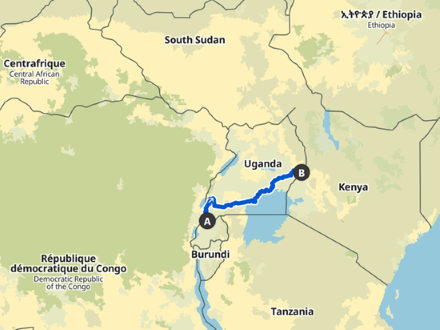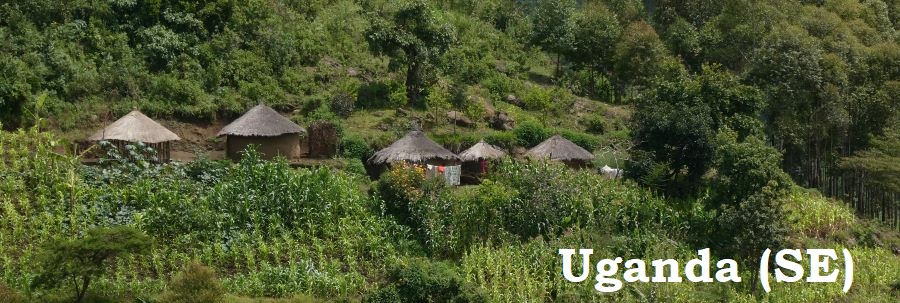
Cycling Southeast Uganda’s rural areas and lakeshore certainly paid off, and the food stalls didn’t disappoint either!
Katunguru – Ishaka – Mbarara – Lake Mburo NP – Masaka – Bukakata … Bugoma – Kalangala … Entebbe – Gaba Beach … Bule Landing Point – Jinja – Mbale – Sipi – Suam (Border with Kenya)
809 km cycled
May 25 – June 17, 2023
Watch the video!
Scenic stretch
After our spectacular ride through Southeast Uganda, it wasn’t long before we were climbing hills again. Leaving the savanna of Queen Elizabeth NP, we had a very scenic stretch passing crater lakes and meandering through beautiful tea plantations. The Pearl of Africa continued to deliver!


Cyclist get-together
We were headed for Lake Mburo NP to meet up with Ayélé (@riding4climatechange) from France, cycling from Nairobi to Cape Town to promote cycling as a sustainable mode of transport. En route she is also interviewing key figures involved in the circular economy, which extends the life cycle of a product by sharing, reusing, recycling, upcycling, repairing etc. We enjoyed her company and admired her enthusiasm for this fabulous project.

Ride a horse!
When Darina’s good friend Alison Corbally was appointed Director General of the Irish Horse Board recently, Darina’s idea of celebrating was on the lines of sipping a cocktail while enjoying an African sunset. However, another good friend came up with a more fitting suggestion: Ride a horse… or African equivalent!
Well, we hadn’t seen horses in Africa since leaving Lesotho, so it was a spot of luck that Lake Mburo NP had stables and a nice quiet German thoroughbred that left me (Darina) with no excuse! And I have to admit that it was quite exciting meeting impalas, bush bucks, warthogs, zebras and long-horned cattle as I rode through beautiful African bush. Cheers Kathleen for wrenching me out of my comfort zone, and a special thanks to Big (the horse) and Sam (the guide and camera man) for helping to make this happen!


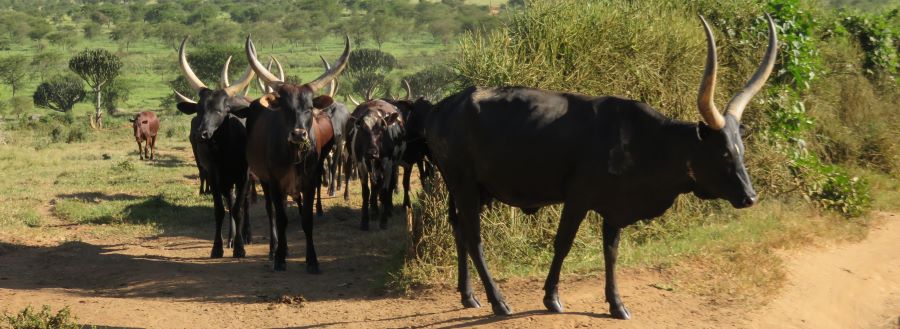
Tsetse Flies
Actually, one reason why there aren’t many horses in sub-sahara Africa is because of the prevalence of tsetse flies, whose bites can kill horses and cattle. Remember those beloved creatures that ate us alive in Katavi NP, Tanzania? Even at the stables Darina visited, four horses have died these past three years as a result of tsetse fly bites. Because of their location in the national park, the stables have had to receive special permission to install tsetse fly traps.
The traps are made of blue and black fabric that is impregnated with insecticide. The flies are attracted to these colours and when they land on the fabric, they meet their doom. And what colours was Kurt wearing in Katavi NP? 67 bites on his back alone are a testament to the tsetse fly colour preference!


Avoiding the mayhem that is Kampala traffic!
On hearing the horrific fatal statistics associated with road traffic accidents in Kampala, Darina was adamant that she wasn’t venturing through this capital city on the bike. The detour that resulted was a very pleasant alternative entailing two ferries, a small fishing boat, an island crossing and lots of lovely quiet roads!

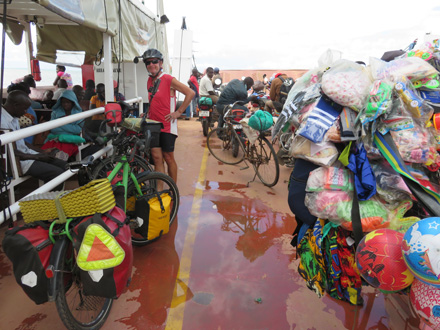
Sese Islands
The first leg of the journey led us to Bugala Island, one of the Sese Islands in Lake Victoria. The Sese Islands were so named because of their infestation with the infamous tsetse flies. The main island we visited has the situation under control, but it seems some of the outlying islands are still home to these horrid insects that transmit sleeping sickness.
Our cycle across Bugala Island was a bit of a workout that led us to a wonderful discovery. Coffee blossoms were in season while we were there, and they have the most wonderful perfume – just like jasmin!
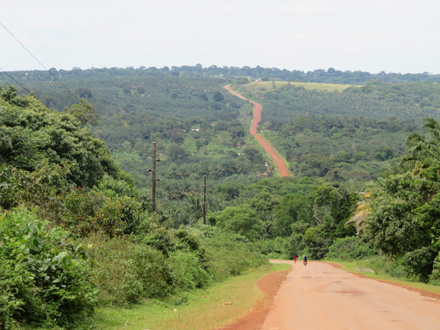


Build a float and relax on a lake!
Almost a year ago, our friends, family and colleagues sent us on our merry little way with a number of challenges to meet while in Africa and we have been documenting these little adventures throughout on our Instagram account.
One such challenge was to “build a float and relax on a lake!” While storms, rough water, crocodiles, hippos and/or bilharzia prevented us from meeting this challenge at Lake Malawi, Lake Tanganyika and Lake Bunyonyi, the largest lake in Africa came up trumps! Equipped with four 20l jerry cans and a plastic seat, Kurt did a few calculations and constructed a float that should support up to 80kg weight. It did! Many thanks to Anthony at Kalangala Pearl Resort for assisting with materials! 🙏


Back to the mainland
From there, we had a three hour ferry ride to Entebbe on the mainland, just south of the capital, Kampala. It was there that Andrea at The Blue Monkey Guesthouse came up with a fabulous plan to continue avoiding Kampala traffic.

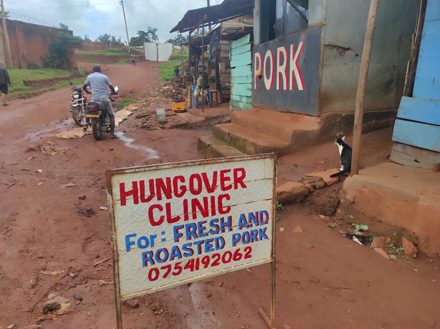
The plan was to cycle up to Gaba Beach some 15km south of Kampala’s centre and charter a fishing boat from there to Bule Landing Point on the opposite side of Murchison Bay. The initial asking price was a whopping $100, but we finally did the 15-minute crossing for the sum total of $12! Money very well spent. On the other side, we followed a beautiful dirt track and even had tea plantations on the 18km up to the old Kampala-Jinja Road, which was deserted. What a wonderful ride! Andrea, you’re a star – thanks a million for figuring this out!
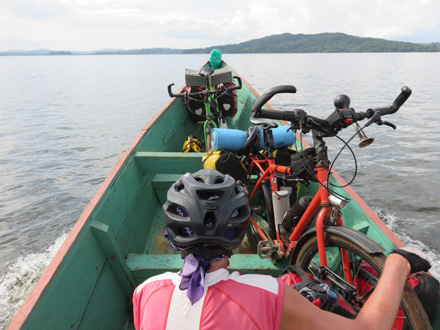
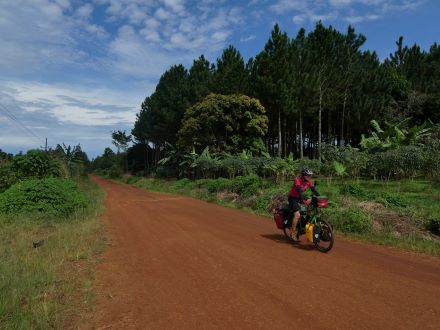
The source of the River Nile
We emerged at Jinja, famous for being the source of the River Nile – or at least the place where the Nile leaves Lake Victoria. It is referred to as The White Nile because of its pale colour due to the sediment carried by the river. The Blue Nile joins it in Sudan, and the Nile finally flows into the Mediterranean at Alexandria in Egypt.
And we relaxed in Jinja, with red-tailed monkeys playing around our tent, that Kampala mayhem seemed like a million miles away!

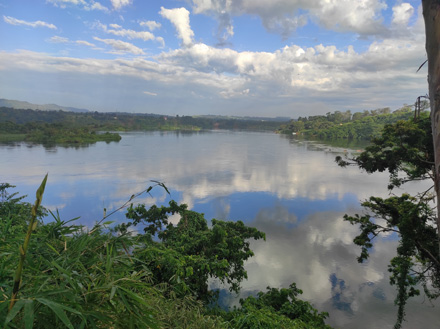

Uganda ticks boxes all round!
Our last leg from Jinja to Mbale and around Mt Elgon led us through a beautiful rural area of Uganda, where thatched rondavels spilled out the friendliest kids we have met en route!

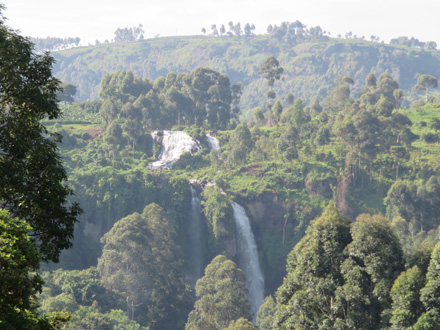
Awesome red earth tracks led through neat rice fields, and when we had to face the steep inclines, a newly tarred road awaited us, thanks to the Chinese!
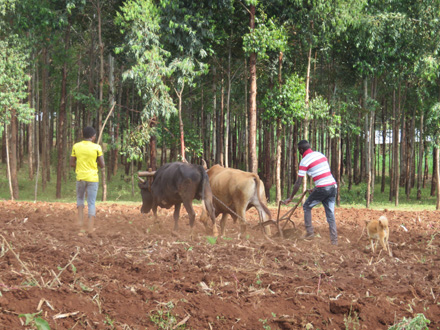


Thank you, Uganda!
A big thank you to all you Ugandans who added a home-away-from-home touch, as we cycled through your marvellous country!


Food
Breakfast was often matoke (plantains), beans and chapati, an omelette or even what you could call lunch or dinner. Goat, cow, chicken or fish was often served with sweet potatoes, rice, ugali (rice porridge) and matoke. A real carb overload! There was no shortage of food stalls, and a good bet was always rolex (roll eggs): an omelette rolled into a chapati or kikomando: chopped chapati and beans.
A substantial snack set us back 1,000 – 2,000 Ugandan Shillings (0.25-0.50 Euros) and main courses ranged from 3,000-10,000 Ugandan Schillings (0.75 – 2.50 Euros) depending on location
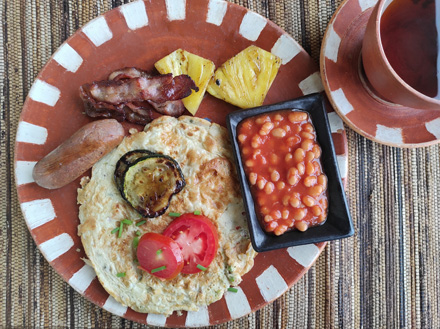

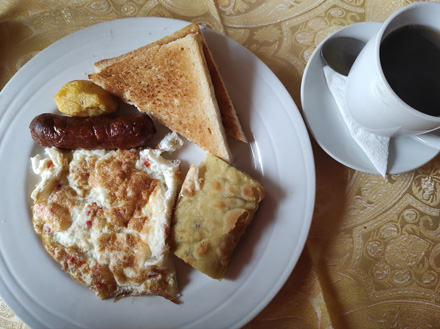
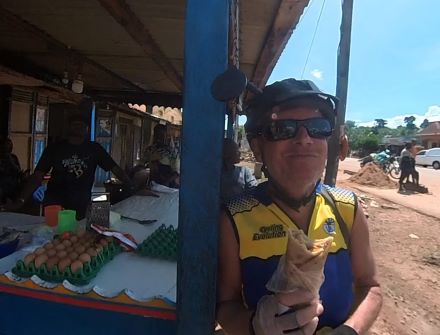
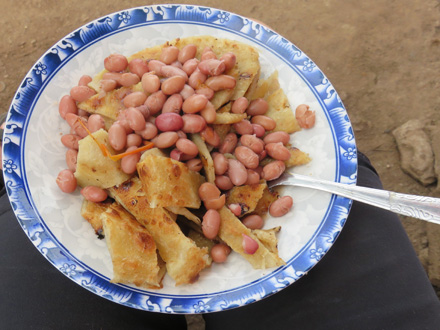
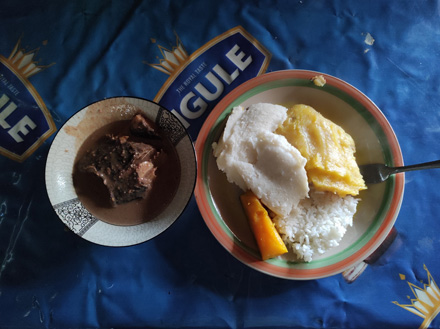
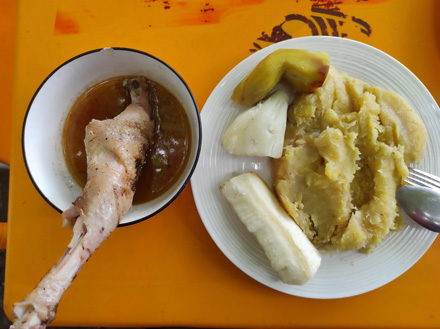
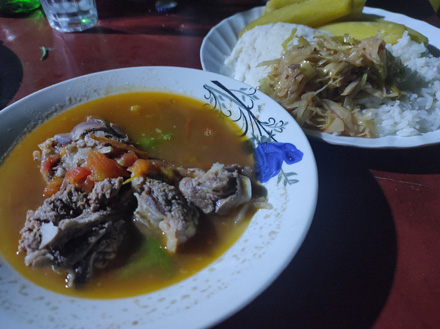

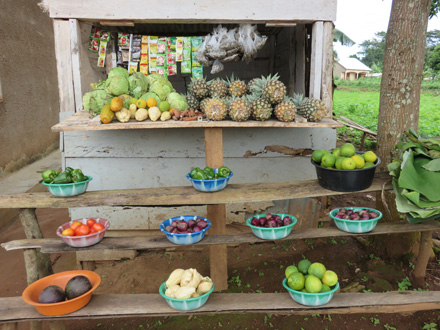
Accommodation
Camping in national parks generally cost 8-10 USD per person. Simple double rooms started at 17,000 Ugandan Schilling (4 Euros).



The verdict!
There is no doubt about it, Uganda well surpassed our expectations, and ranks way up there as one of the highlights of this whole Africa trip. From gorillas and chimpanzees, to elephants and zebras, tea plantations and coffee blossoms as well as lakes and waterfalls, Uganda ticks boxes all round. It definitely deserves its title: The Pearl of Africa!



